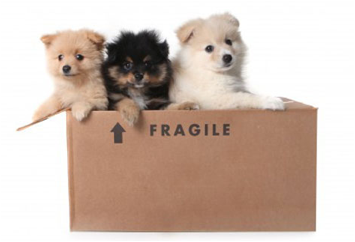Moving to a new area can be a stressful ordeal for all involved, especially your pets. The chaos of packing, moving furniture and the strangeness of a new area can leave your cat or dog spinning. However, with a little advance planning, patience, and affection you can help your pet quickly adjust to their new neighborhood.
“Before you move make sure that your pet is current on their immunizations and that you have any health statements or documentation, like your pet’s rabies certificate, that may be required in your new area,” said Stacy Eckman, lecturer at the Texas A&M College of Veterinary Medicine & Biomedical Sciences (CVM). “Also, it’s important to start preparing early since interstate moving requires an interstate health certificate which is issued within ten days of travel, and moving abroad means your pet will need an international health certificate which takes around thirty days to facilitate.”
When it comes time to actually start the move, making sure your pet is safe and comfortable is essential. Pets will often get nervous when the packing starts so it is vital to try and alleviate this anxiety by sticking to a normal routine with your pet by having regular play times, walks, meals, etc.
“While you’re traveling it’s crucial that your pet be in a carrier if at all possible to ensure the safety of the pet as well as the car’s occupants,” said Eckman. “You should also make sure to factor in rest stops for the pet that include snack and water breaks. For these rest stops make sure to have a reliable collar or harness to keep the pet safe and from running away.”
When traveling by plane, it is important to remember that many pets do well once they are actually on the plane and settled. The FFA prefers that pets not be heavily sedated during flights, especially those that are flying cargo, due to safety concerns. If you are concerned about your pet, your veterinarian can help you develop strategies to aid your pet’s anxiety of flying. Often these will need to be tested at home before traveling in case the pet has adverse reactions, so you will need to allow time for this.
“When you finally arrive at your new home, it is important to make sure that the area is safe and secure for your pet,” said Eckman. “Look for items that may have been left over from previous tenants, like traps, chemicals, or tools, and make sure that the home’s perimeter is secure. You should then let your pet get used to their new home and surroundings, and try to get back into a normal routine with them as quickly as possible.”










